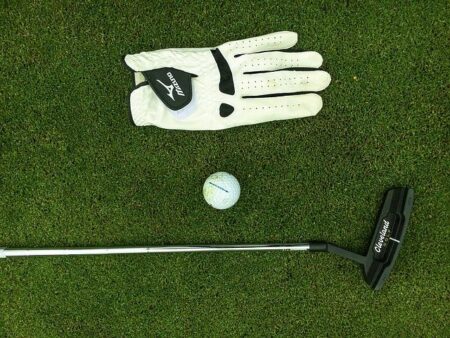When navigating the nuanced challenges of the golf course, choosing the right club can significantly impact your game. One of the most common dilemmas golfers face is deciding whether to use a sand wedge or a pitching wedge in various situations. Both clubs serve distinct purposes and excel under different conditions, yet their similarities often lead to confusion. This article delves into the key differences between the sand wedge and pitching wedge, providing expert insights to help players make informed decisions and improve their short game strategy.
Choosing Between Sand Wedge and Pitching Wedge Based on Shot Distance and Terrain
When deciding whether to pull out your sand wedge or pitching wedge, the key factors often boil down to shot distance and the terrain you’re facing. Sand wedges are engineered for shorter distances, typically ranging from 80 to 110 yards, and excel in situations that demand high loft and soft landings. Their wide sole is specifically designed to glide through bunkers and thick rough without digging too deep into the turf. In contrast, pitching wedges cover slightly longer distances – usually between 110 and 130 yards – and provide a lower trajectory, which can be advantageous when you need to carry the ball further while maintaining control on firmer or flatter lies.
Terrain complexity plays a significant role as well. If your ball is nestled in soft sand, deep rough, or on a tight slope, the sand wedge becomes invaluable, giving you the bounce and forgiveness needed to escape difficult lies cleanly. On fairway lies or when the grass is thin, the pitching wedge’s narrower sole and moderate bounce help you make crisp contact without excessive turf interaction. Here’s a quick comparison for clarity:
| Wedge Type | Ideal Distance | Best Terrain | Loft Range |
|---|---|---|---|
| Sand Wedge | 80 – 110 yards | Bunkers, Rough, Soft Lies | 54° – 58° |
| Pitching Wedge | 110 – 130 yards | Fairway, Firm Lies | 44° – 48° |
- Sand wedge: Use for fluffy sand shots, short chips with higher roll, and tricky lies.
- Pitching wedge: Best for approach shots where accuracy and penetration through the turf are required.
Expert Tips on Selecting the Right Wedge for Improved Accuracy and Control
Choosing between a sand wedge and a pitching wedge hinges on understanding subtle yet impactful differences that influence shot precision. The sand wedge, typically lofted between 54° and 58°, excels at bunker play and shots requiring high trajectory with soft landings. Its wider sole is designed to glide through sand and rough, supporting players when escape shots or tight lies are involved. Conversely, the pitching wedge, usually lofted between 44° and 48°, is ideal for approach shots that demand distance and control, with a narrower sole promoting cleaner contact on tighter turf conditions. Recognizing the specific needs of each shot in your scoring zone can dramatically improve accuracy and consistency.
To further clarify your choice, consider key factors in shot execution:
- Lie and lie angle: Sand wedge for softer lies and pitching wedge for firmer ground.
- Shot trajectory: Higher trajectory with sand wedge vs. lower, controlled trajectory with pitching wedge.
- Distance: Typically, pitching wedges cover 10-15 yards more than sand wedges.
- Clubface design: Wider sole of sand wedge prevents digging; pitching wedge’s slimmer sole enhances precision.
| Wedge Type | Typical Loft | Best Use | Distance Range (yards) |
|---|---|---|---|
| Sand Wedge | 54°-58° | Bunker shots, soft lies | 80-110 |
| Pitching Wedge | 44°-48° | Approach shots, tight lies | 110-130 |
In Retrospect
In the end, the choice between a sand wedge and a pitching wedge hinges on the specific shot at hand and the golfer’s comfort level with each club. While the sand wedge offers versatility around bunkers and softer lies, the pitching wedge remains a reliable option for longer approach shots and tighter lies. By understanding the nuances of each club’s design and typical use, players can make more informed decisions on the course, ultimately improving their short game strategy. As always, practice and familiarity with your wedges will be key in determining which club best suits your individual playing style and the challenges you face on the green.








